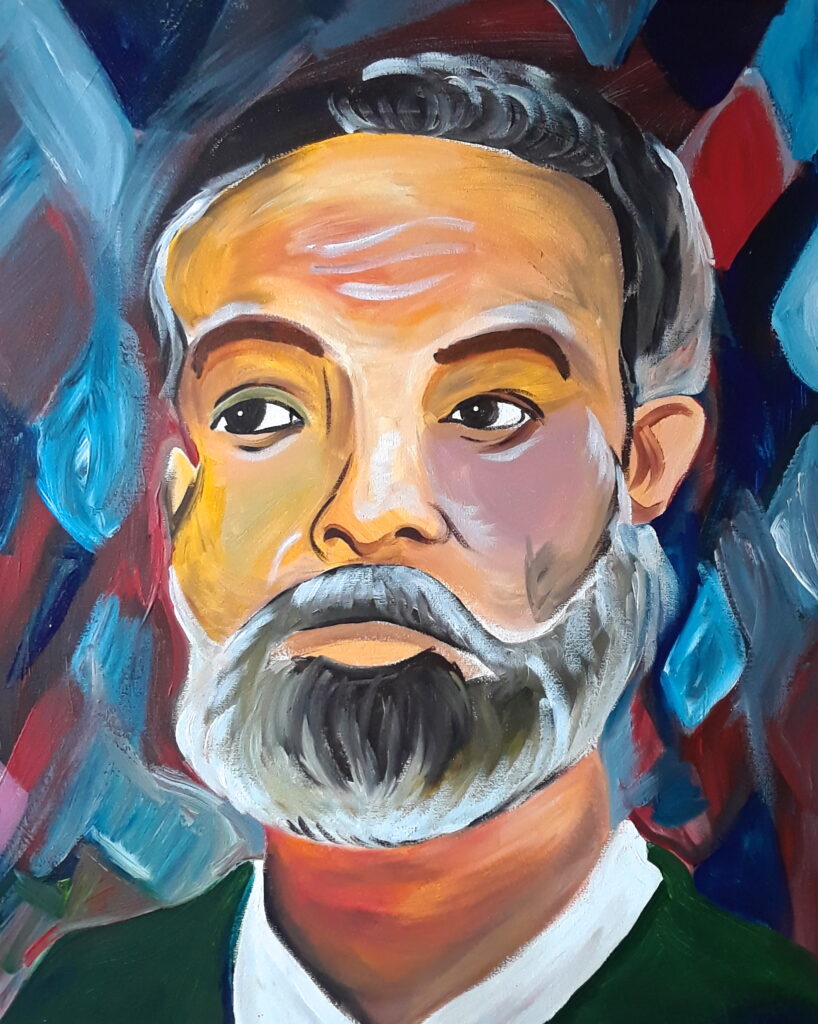
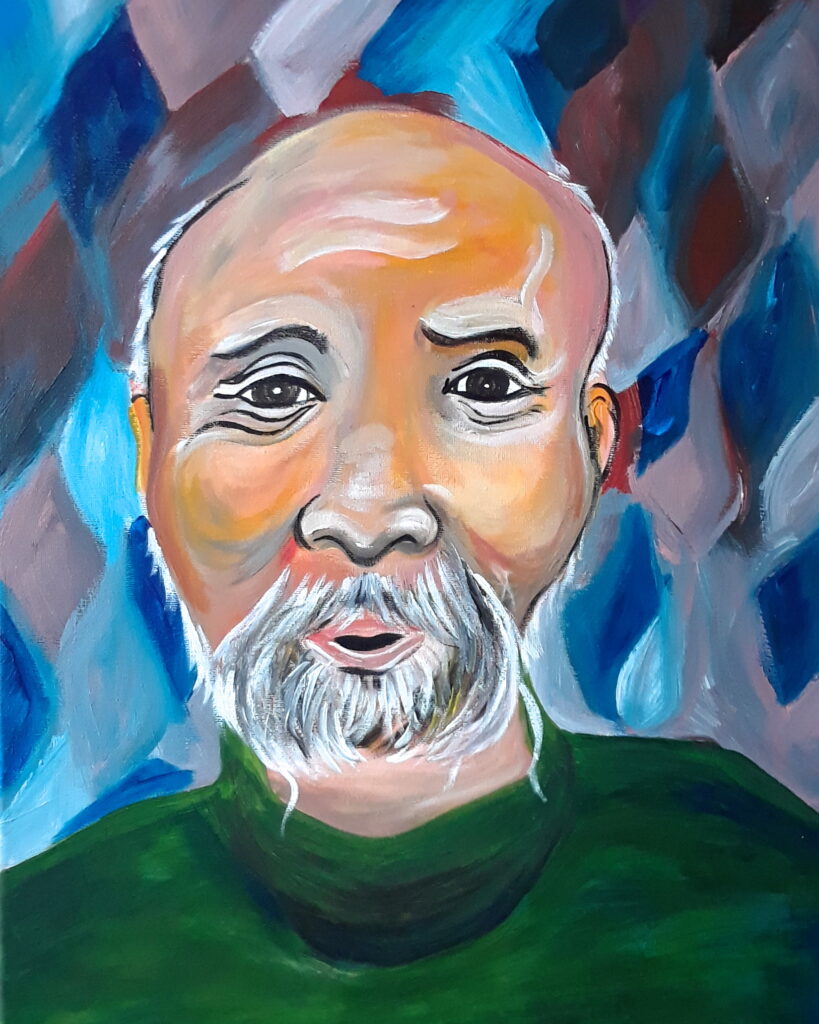
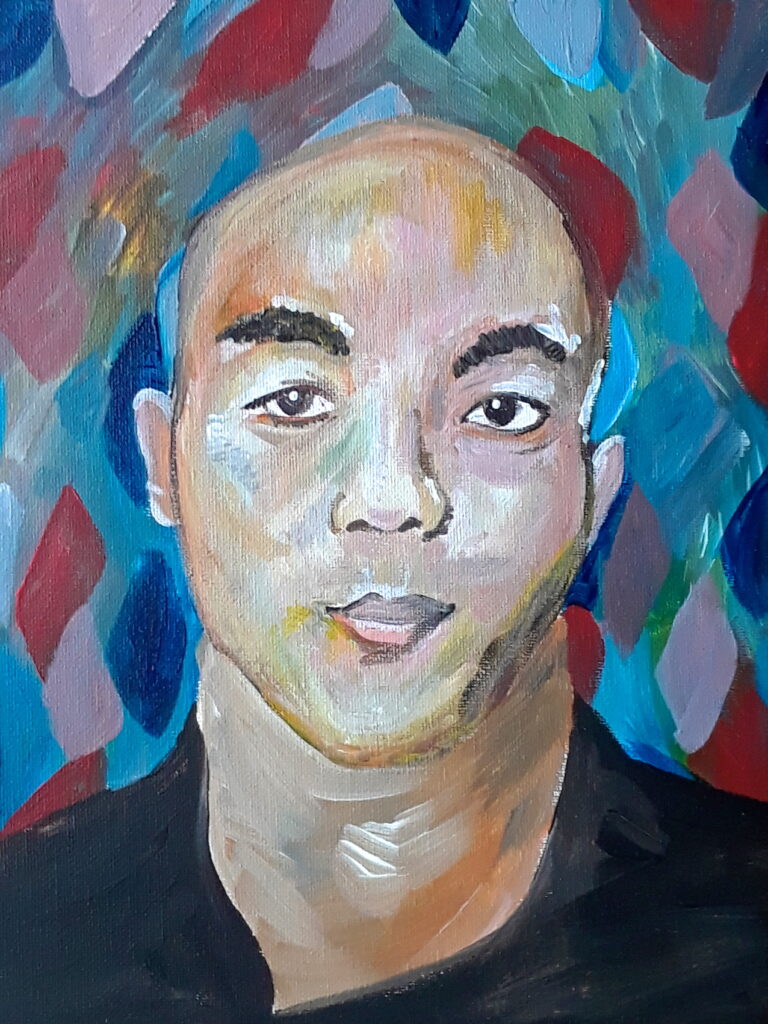
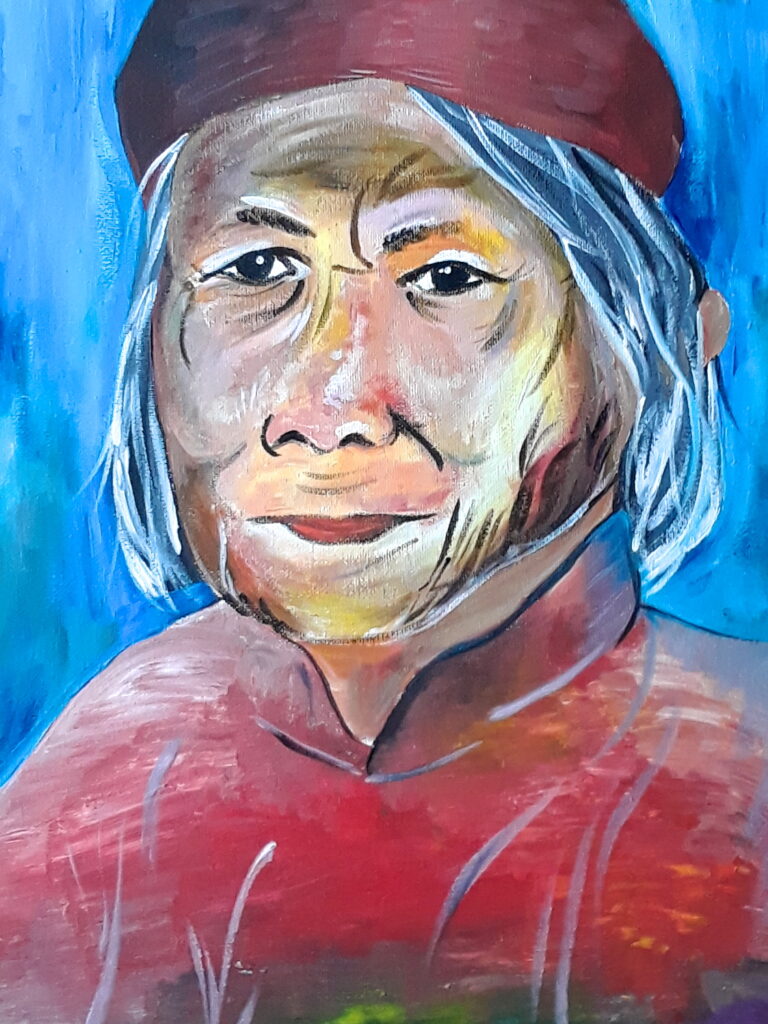
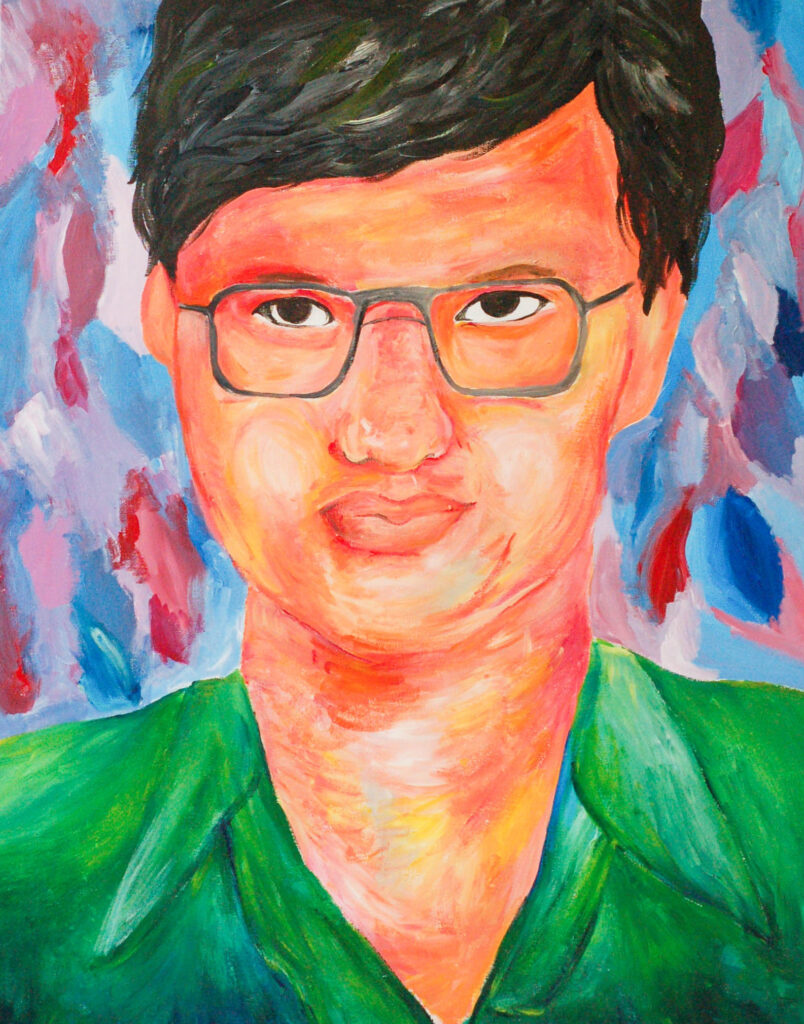
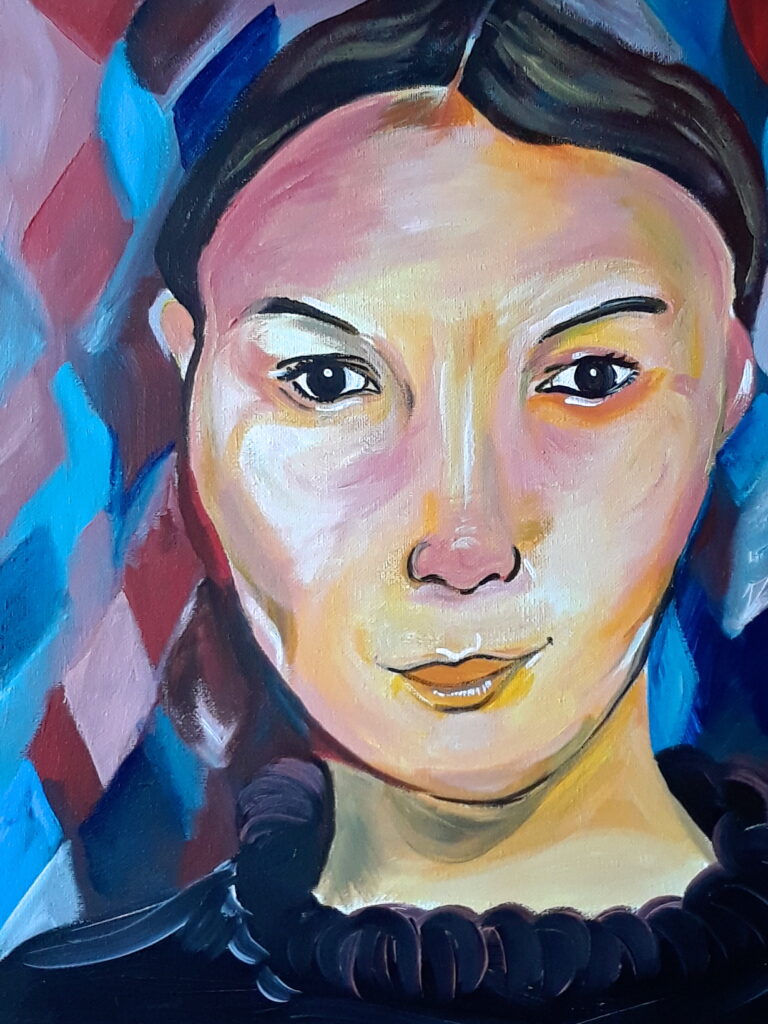
These paintings explore Asian American identity through the lens of Tuvan folklore. There are nine paintings from this series on display at the Asian American Resource Center in Austin, Texas October 4 – December 18, 2018.
In 2014, the artist taught abroad at Samara State University in Samara, Russia, and then backpacked her way through Siberia and the Far East. In Siberia, she spent time working in Asian Republics, such as the Republic of Buryatia and the Republic of Tuva. For the first time, she saw reflections of herself while traveling. She had spent much of her travels explaining to people along the way that she was Asian-American and that the US had a wealth of Asian cultures but still identify as American.
It was in Tuva, where she first did not need to explain herself. Tuva is an autonomous republic in the geographical center of Asia, located in south Siberia. Katherine worked in at a K-12 summer camp teaching English. Katherine felt a sense of belonging, as if Tuva had been an ancestral homeland. When interacting with the children, they frequently shared stories of their own folklore. Children believe and frequently shared that Tuvans descended from giant sun gods, which is why some children had hair that was gold in color. Children also believe they are the direct descendants of Genghis Khan. Blending folklore with reality was common practice among Tuvan youth and was a practice Katherine had not encountered in her many years of teaching.
The stories that children shared inspired the artist to create these paintings, some based off of people she had met traveling, some personal friends. The narrative of certain individuals claiming lineage from ethereal sun gods or even Genghis Khan himself adds a facet to the ever-evolving, nuanced Asian-American identity. Katherine chooses to portray this concept through using vibrant and golden tones in skin. Faces commonly represent the medium in which we let others define us. We alter that story through tradition, folklore, and mysticism.